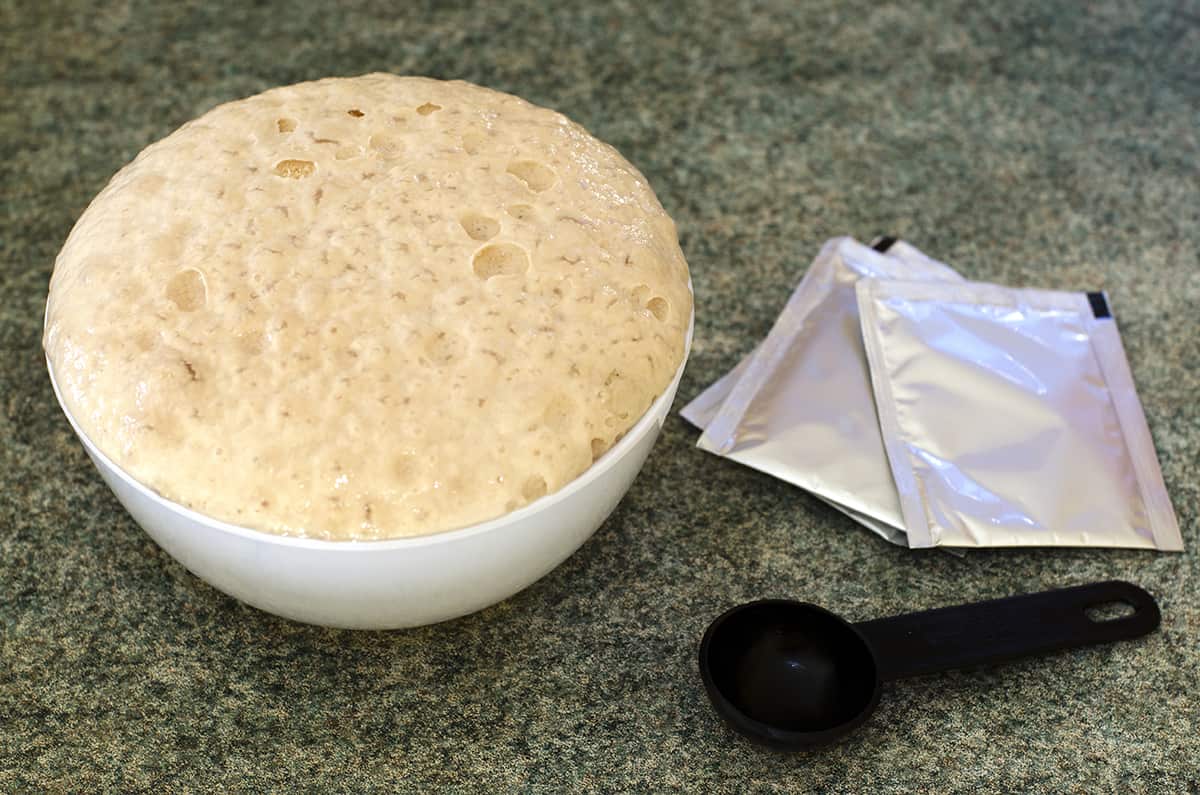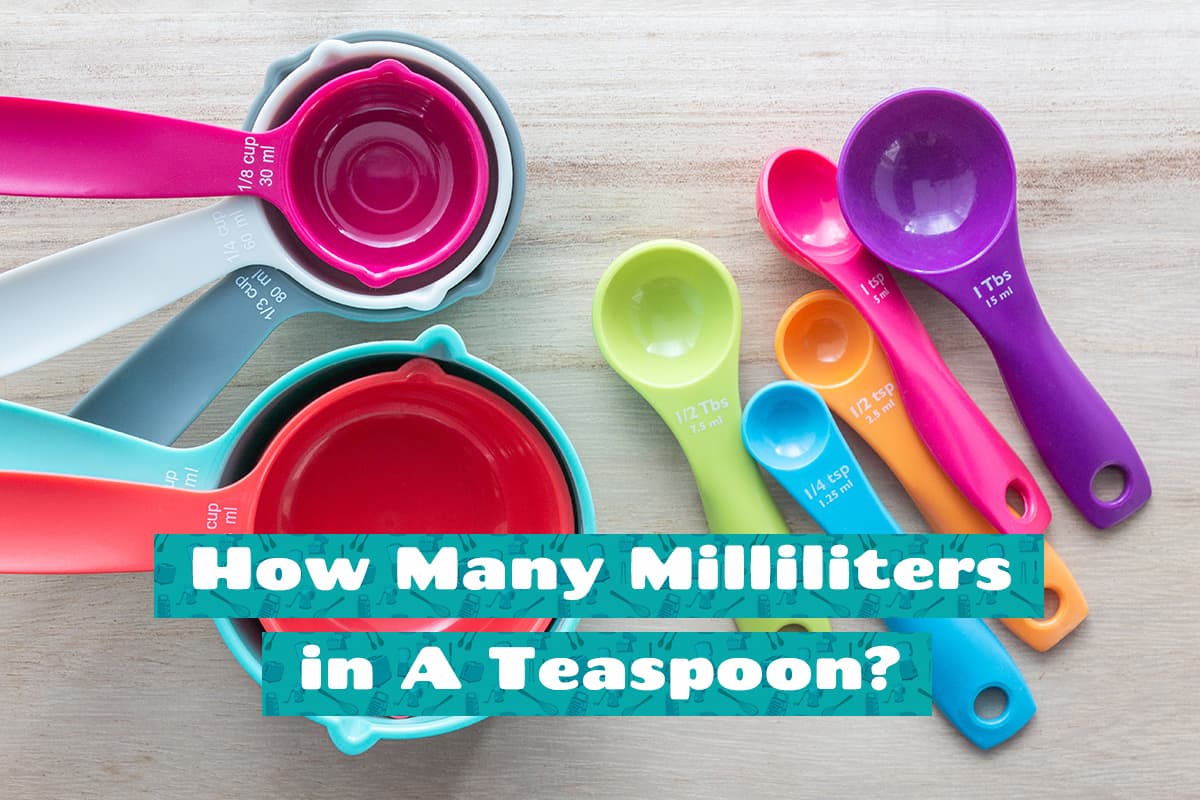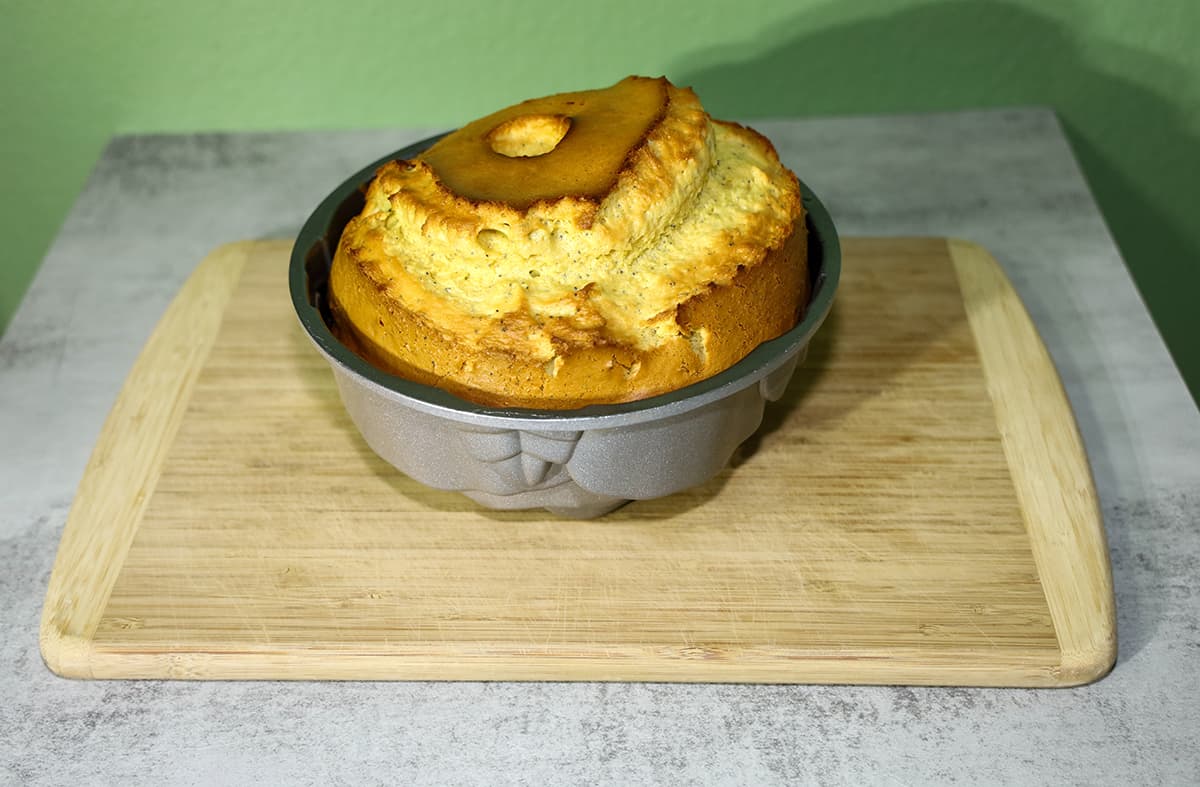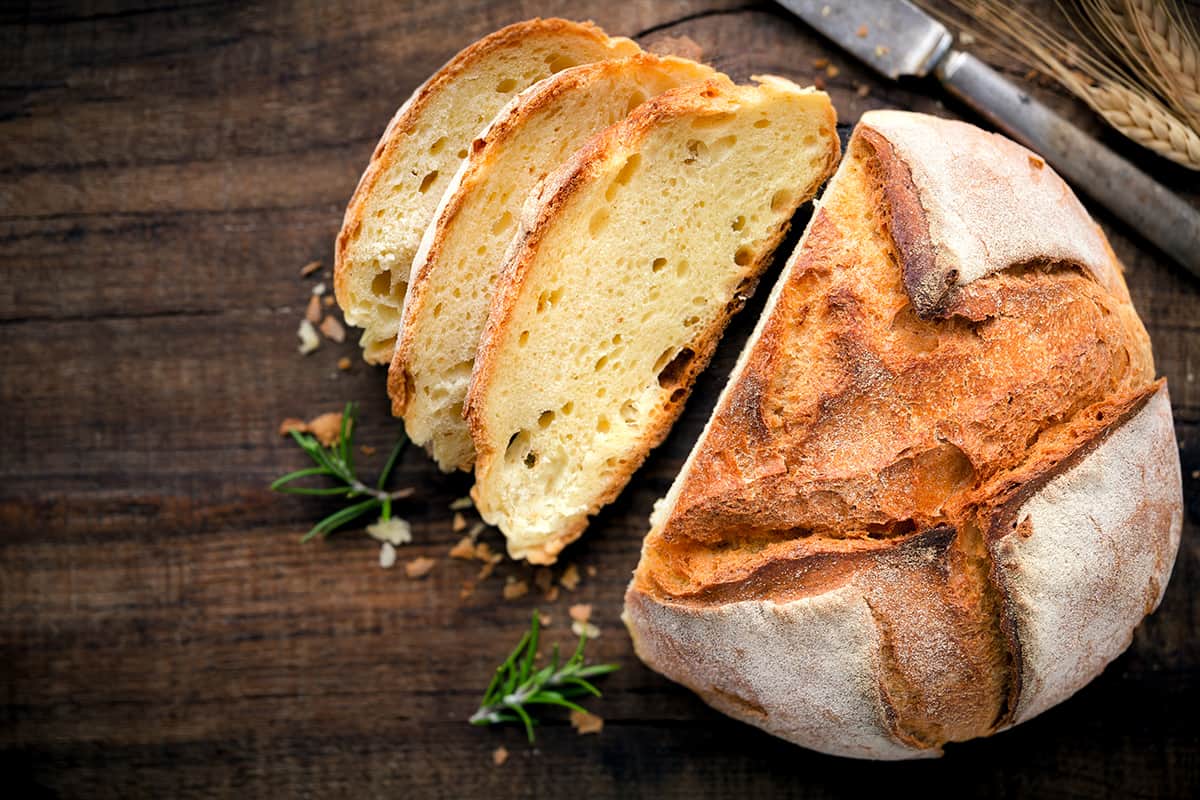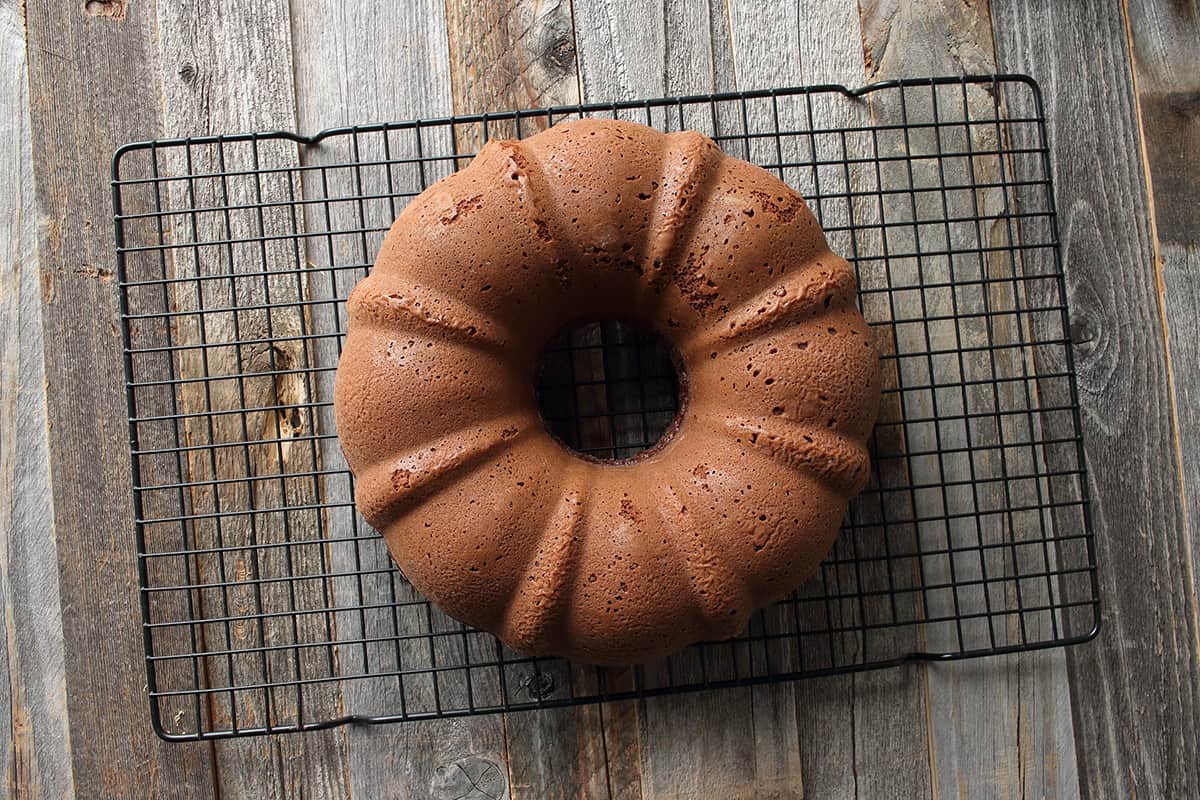If you’re a fan of bread and breadmaking, you’ll know that yeast is an important element in many varieties of bread. It causes the bread to rise, which contributes to its soft, luscious texture. If you’re going to make your own bread, you might be curious about how much yeast is in a packet.
A single packet of baker’s yeast will contain 2-1/4 teaspoons or 7 grams of yeast.
For those that are curious, I will cover everything you need to know about yeast in terms of what it is, how many types there are, how much yeast is in a packet, and how many packets you’ll need for your bread-making adventure.
Understanding the Basics of Yeast

If you’re a fan of baking, you’ve probably heard about yeast and its role in the process. However, anyone who has never worked with dough that uses yeast can get apprehensive because of this ingredient’s appearance.
So, what exactly is yeast? Yeast is a fungus with a single cell that is used in baking as a leavener. It raises dough via a fermentation process where the sugars in the flour are consumed before “burping” carbon dioxide as a byproduct.
The trapped gas expands the dough, resulting in all of the tiny bubbles. This is what makes bread and other baked items light and airy.
Yeast is often utilized in the production of wine and beer in addition to baking.
4 Common Types of Baker’s Yeast
As its name suggests, baker’s yeast is a yeast that is used in the baking process. It can be divided into four categories, namely active dry yeast, instant yeast, quick-rise yeast, and cake yeast.
Active Dry Yeast
Manufacturers extract the water from live yeast to come up with active dry yeast. It is a fine, granular product that looks like a fine powder and is sold in packets and jars.
Unlike other forms of yeast, active dry yeast is dormant. Contrary to popular belief, you don’t need to dissolve active dry yeast in lukewarm water (between 105° and 115° F) before adding it to the dry ingredients.
You can go ahead and mix it into the flour, sugar, and fats to activate the yeast. However, it tends to have a slower fermentation process as opposed to other types of baker’s yeast.
Instant Yeast
Like active dry yeast, instant yeast is powdery and dry. However, it is finer in texture than active dry yeast, which allows it to dissolve in wet ingredients more quickly, thereby accelerating the fermentation process.
Because of its instant-working nature, you do not need to combine instant yeast with lukewarm water to kickstart the fermentation process.
However, it will accelerate how quickly the yeast particles are activated and begin producing carbon dioxide. To be on the safe side, just add instant yeast to your dry ingredients before mixing them with the wet.
Quick-Rise Yeast
Quick-rise yeast is similar to active dry yeast and instant yeast in terms of texture and dryness. The only way you can tell quick-rise yeast apart from the other types of dry yeast is by examining the package closely for the quick-rise or rapid-rise label.
This type of yeast produces carbon dioxide at a much faster rate than the previous yeast types. As such, it should only be used for baked goods that require a single rising phase.
In addition, because it can leaven dough more quickly, it will not produce as potent a yeasty, bready flavor as other yeast types. So, you should reserve quick-rise yeast for making baked goods whose flavors will be masked by toppings or fillings.
Cake Yeast
Cake yeast looks completely different from the previous types of yeast. It comes it in solid block that contains millions of individual yeast cells that resembles a solid block of brownish clay.
Because cake yeast is still fresh—i.e., it hasn’t been dehydrated—it has a shorter shelf life as opposed to the other yeast types. As such, you should refrigerate the block of yeast immediately after opening it to ensure that the yeast stays fresh for longer.
To use cake yeast, you should dissolve it in a tiny quantity of lukewarm water. This is done for two purposes: to check that the yeast is alive by the presence of bubbles and to kickstart the fermentation process.
In terms of flavor, cake yeast produces a more potent, bready flavor, which is why professional bakers swear by cake yeast.
How Much Yeast Is in A Packet?
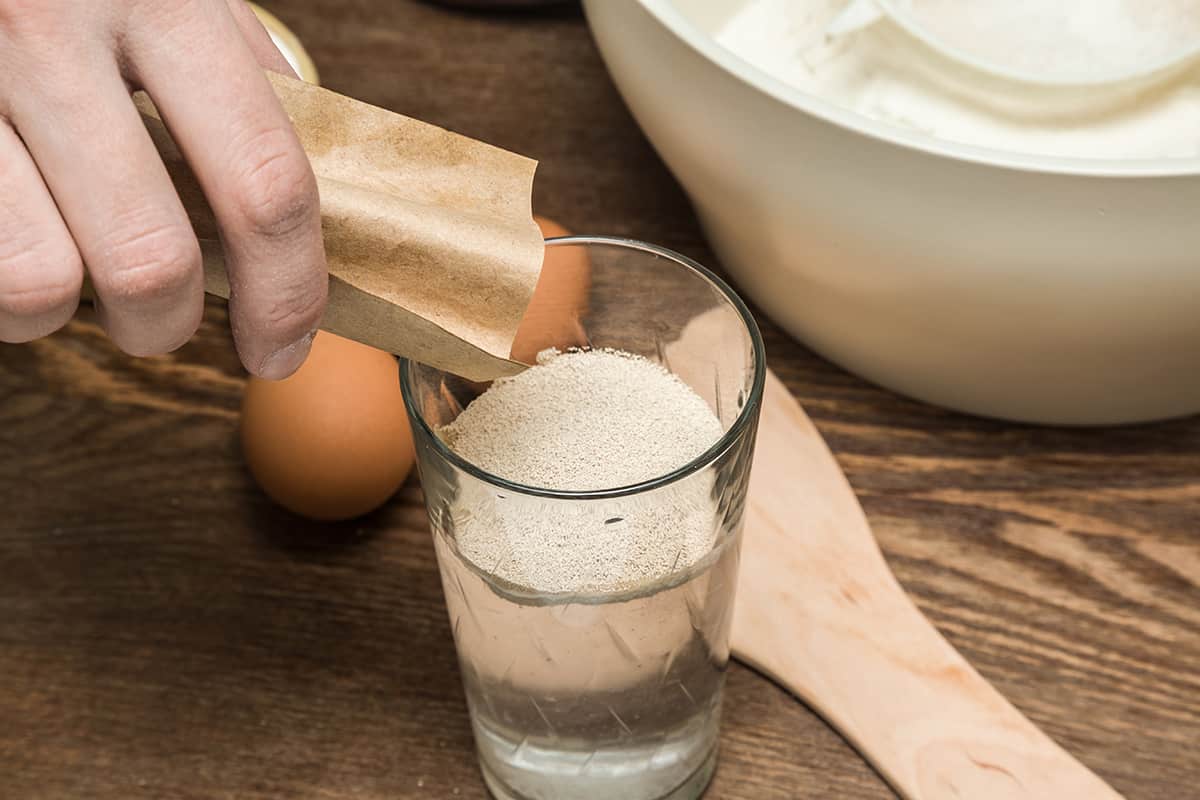
The dry yeast types (active dry, instant, and quick-rise) are generally sold in individual packets or envelopes. A single box of packaged yeast will come with three packets.
So, how much yeast will you find in a single packet? As long as it is a type of dry yeast, a single packet will contain 7 grams or 2-1/4 teaspoons.
While this might sound like a tiny amount, you should know that a little bit of yeast, especially dry yeast, can go a long way. However, if you’re a hardcore baker who uses yeast regularly, then you can also pick up yeast in 4-ounce jars, which is the same as 24 teaspoons.
Another reason why yeast packets are so small is that they are not meant to be refrigerated. So, when you tear it open, you should use all 7 grams or 2-1/4 teaspoons of yeast right away.
Leaving the opened yeast in a non-airtight container will cause it to ferment prematurely and become unusable during your next baking endeavor.
How Many Yeast Packets Should I Use?
The number of yeast packets or envelopes you should tear open per recipe depends on how much the recipe calls for.
However, there’s a general proportion we can follow to determine how much yeast or how many yeast packets we need based on how much flour is used in the recipe.
For every 4 cups of flour, you should use a single packet (7 grams or 2-1/4 teaspoons) of dry yeast. When using fresh cake yeast, you will need 17 grams per 4 cups of flour.
However, the ratio is different for making pizzas. For every 500 grams (3 cups + 2 teaspoons) of flour, you should add ¼ of a teaspoon of yeast.
